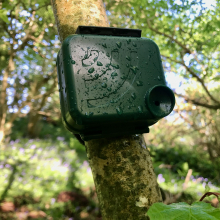
In response to changing climates, many plants and animals are moving to higher elevations, seeking cooler temperatures. But a new study finds that flying insects like bees and moths may struggle with insurmountable issues to this escape route.

As part of an $11.6 million research initiative, Biological Sciences postdoctoral fellow Sarah Orr will leverage a new USDA Fellowship to study the impact of synthetic pesticides on bumblebees — a key pollinator for U.S. agricultural production.

Scientists at the Georgia Institute of Technology and Max Planck Institute for Intelligent Systems in Stuttgart have published a perspectives piece on the different tools used throughout the world aiding in the conservation of wildlife and biodiversity.

Their novel approach showed how mammal traits evolved with changing environments over time and revealed factors that contributed to biodiversity loss.


